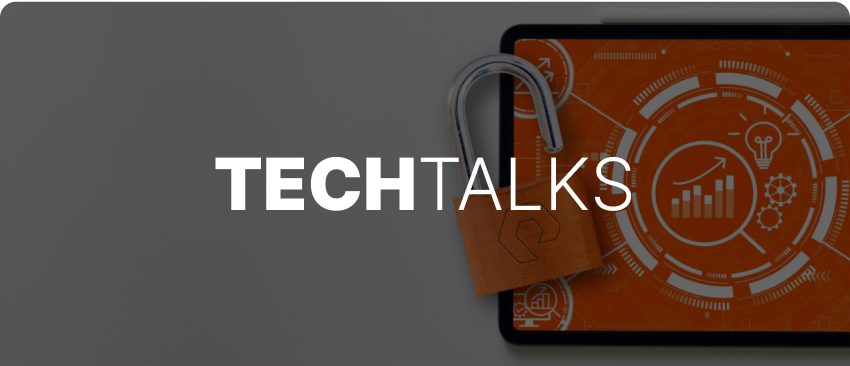効率化を促進するヘルスケア ERP
近年、医療・ヘルスケア業界ほど重圧にさらされている業界はありません。世界的なパンデミックによるさまざまな問題に加え、コストの増加や、患者データ保護規制の厳格化に直面しています。コスト削減のために効率化の推進が求められるなかで、多くの医療機関はデータ保護の強化に伴うデータ・システムのサイロ化を目の当たりにしています。サイロ化したシステムは非効率以外の何ものでもありません。この問題を解決してくれるのが、ヘルスケア・エンタープライズ・リソース・プランニング(ERP)です。
現在、ERP はあらゆる業界で利用されています。ERP とは一般的に、財務、調達、プロジェクト管理、サプライチェーン・オペレーションなど社内のあらゆるシステムのデータを統合し、一元化する、ソフトウェアやソフトウェア・アズ・ア・サービスのことをいいます。ERP は、互いに接続されたシステム間でのデータのスムーズな共有を可能にします。また、データの重複を排除し、データの整理と利用を促進して、社内のあらゆる意思決定に貢献します。
医療・ヘルスケア業界において、一元的な ERP システムはデータ・サイロを解消し、患者ケアへのアクセス性と質の向上、業務の効率化、総コストの削減に役立ちます。他の業界と同様、医療・ヘルスケア業界でも ERP が大きな効果を発揮することは間違いありません。
ヘルスケア ERP の機能
医療・ヘルスケア分野の情報システムは複合的で互いに連携しています。しかし、以前は各部門の専用システムの継ぎ接ぎで作られていたことも多く、必ずしもうまく連携できていませんでした。一貫性に欠けるため、複雑で、患者ケア能力が低く、費用も高くなっていました。
ERP は、業務プロセスが多岐にわたる医療機関の多様なデータ全てを一元化する優れたソリューションです。各コンポーネントが他の全てのコンポーネントと統合できるよう設計されており、病院内のあらゆるデータへの容易で自由なアクセスを実現します。また、患者管理システムや臨床システム、事務管理、人事、財務の各システム全体でデータ共有が可能になり、コスト追跡とリソース管理の改善を促進します。
ヘルスケア ERP を利用する目的
ヘルスケア ERP ソリューションを利用する目的は 2 つあります。1 つは、組織全体における必要なデータへのアクセス性を高めること。もう 1 つは、効率性を高めることです。ERP によって、医療従事者は、検査画像から予防接種記録まで、あらゆる患者データにスムーズにアクセスできるようになります。患者にとっても、多くの場合、自身のデータが患者ポータルに集約され、データの確認や管理がしやすくなるという利点があります。このように、ERP システムによって、医療機関と患者がより効率的に連携できるようになり、治療水準の向上が実現します。
ヘルスケア ERP ソリューションは、医療機関の事務機能と臨床機能の全てを一括管理することで、効率化を促進します。管理部門は、データを用いることで、コストの追跡、上限の設定、より詳細な情報に基づいた意思決定が可能になります。また、ERP システムには人工知能や一括報告機能が搭載されていることも多く、これらを活用することで貴重な知見を得て、システムがなければおそらく見えなかった問題点を明らかにできます。
医療・ヘルスケア分野で ERP が必要な理由
エンタープライズ・リソース・プランニングは元々、ロジスティクスやサプライチェーンへの依存度が大きい業界で開発されたものです。ERP 方式を採用することで、企業は前述のような全般的なメリットを得られるようになりました。医療の対象は主に個人の健康ですが、その実施には産業的手法が必要になります。医療品を調達して手術室や診察室、各患者のもとに届けるには、サプライチェーンを使用します。患者ケアの計画を立てる際も、業者の供給力、手順計画、医療機器の確保を中心としたロジスティクス的なアプローチが欠かせません。
医療・ヘルスケア業界向けの ERP は、こうした体系的なアプローチから自然と生まれたものです。医療には他の産業と異なる独特の性質はありますが、それでも手術機器 1 台あたり、画像診断報告書 1 通あたり、患者 1 人あたりに焦点を当てたコスト管理やデータ・インサイトは欠くことができません。ヘルスケア ERP は、こうしたプロセスを効率化するソリューションです。
ヘルスケア業界向け ERP システムの例
多くのベンダーが ERP ソリューションを開発していますが、その大半は医療・ヘルスケア専用ではありません。例えば、SAP S/4HANA、Oracle Fusion Cloud ERP、IFS Cloud、Microsoft Dynamic 365 などがあります。一方で、医療・ヘルスケア業界向けに特化したものもあります。こちらの記事では、こうしたシステムは「病院などの医療機関が効率的なデータ処理に必要とする接続性と横断分析機能を備えている」ため便利であるとしています。
どちらのシステムを選ぶかは、既存システムとの統合、病院やネットワークの規模、モバイル・アクセスの重要性など、多くの要素によって変わってきます。前述の記事では、以下の機能を特に重視しています。
- 重複データとコーディング・エラーの排除
- 増加・多様化するサプライチェーン・プロセスの管理
- 堅牢な従業員・患者管理機能
- 予測解析や AI による患者ケアの品質保証
ヘルスケア ERP の重要なポイントの 1 つとして挙げられるのが、クラウドベースのインフラを用いたアクセスの拡大です。アクセス速度を上げ、コストを削減するには、データ・ストレージのフットプリントを削減するクラウド・プロバイダを選ぶことが欠かせません。導入効果の高いヘルスケア ERP ソリューションといえるためには、低レイテンシ―、複雑なデータ分析に対応できる能力、電子健康記録(EHR)システムの迅速な起動などの特長が求められます。これらの特長を実現するには、まず適切なプロバイダを選ぶことが肝心です。
医療・ヘルスケア分野で ERP を用いる理由
医療機関が ERP システムを利用するのは、医療従事者と患者双方にとってよりよい結果を出すためです。ヘルスケア ERP ソリューションには、以下のような大きなメリットがあります。
患者ケアの改善:適切な情報に迅速かつ容易にアクセスできるため、医療従事者が治療に関してより賢明な判断を下せるようになります。
運用コストの削減:病院運営を詳しく分析できるため、管理部門が支出先を確認し、費用対効果の低い点の解決に取り組めるようになります。
医療プロセスの効率化:最新の情報を使用して、管理部門と医療部門の双方が診断・治療のボトルネックを特定し、解消できるようになります。
財務予測の精度向上:支出先とその費用対効果を把握することで、管理部門が将来的な支出と資金需要に関してより精度の高い予測ができるようになります。
今日の医療・ヘルスケア業界は非常に厳しい状況に置かれており、競合する優先項目、法規制の変更、コストの増加などの問題が山積みになっています。最良のケアをできるだけ安価で提供できるよう、最も効率的なプロセスを医療機関全体で採用しなければなりません。ヘルスケア ERP ソリューションは、そのために必要なツールとして機能します。






